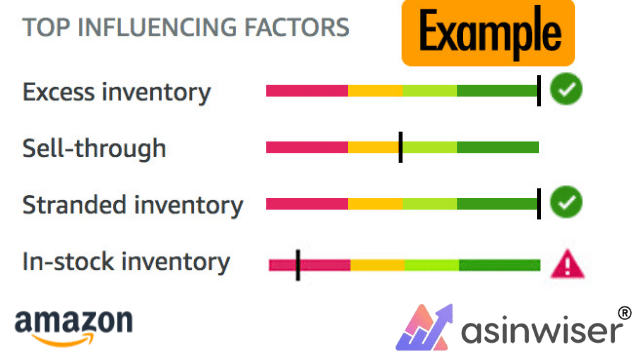
How Does Amazon Inventory Performance Index (IPI) Score Impact FBA Sellers
Are you interested in learning more about the Amazon IPI score and how it impacts your enterprise? This blog will cover the fundamentals of the Amazon Inventory Performance statistic and some helpful hints for avoiding inventory-related challenges that influence many sellers. In reality, both too much and too little inventory can be troublesome.
One of the most effective strategies to ensure that your brand is as successful as possible is to keep track of your inventory. Continue reading to understand more about IPI and how to improve your Seller Central performance.
What is an IPI score, and how can you get one?
Is it red, green, or yellow that you’re seeing? The Amazon Inventory Performance Index (IPI) grade is a quick way to see how your inventory is doing overtime. This figure calculates the inventory fitness and strength of your FBA account using a variety of parameters. This score may be found in Seller Central’s Inventory Dashboard.
What is a decent Amazon IPI score?
The score runs from 0 to 1,000 and is colour-coded—the greater the score, the superior the health and performance of your inventory. According to Amazon’s most recent update in January 2021, score of more than 450 is deemed an “excellent” IPI score and will appear green. Anything below that may impact your account may result in a review to verify you’re making progress.
Amazon fulfilment centres are designed to disperse things rather than keep them on hand indefinitely. It’s critical to your Amazon success that you don’t have too much or too little inventory. Old goods cost you money in storage fees and lead Amazon to place restrictions on your enterprise. On the other hand, not having adequate inventory will almost certainly result in your company losing the Buy Box. When common items are regularly out of stock, Amazon is a problem.
What is the significance of the IPI score?
Sellers that continuously obtain higher IPI scores will be granted larger storage limits, adjusted for sales volume and overall system. When determining quarterly limitations, Amazon evaluates both a seller’s latest sales volume and seasonal volume from the previous year. If merchants remain on top of their IPI score and take steps to increase inventory efficiency then Amazon can manage their facilities more efficiently and provide things to customers faster .
Amazon IPI will also help to compensate seasonality and unprecedented economic disruptions. It allows your long-term inventory performance to serve as a buffer against short-term swings and protecting your IPI score. This provides you more time to change your logistics. It also helps to manage your inventory in various unforeseen situations like challenges that may arise during the 4th quarter.
Indicators of IPI score
Several factors influence an IPI score, and to assist sellers in solving account-specific concerns each statistic is broken down further in Seller Central .
Percentage of excess inventories
Items with a supply of more than 90 days based on expected demand as determined by Amazon is excess inventory. This measure indicates how much of your inventory is “extra.”
Stranded inventory percentage
When a seller’s inventory is unavailable for purchase due to a listing issue, sales are lost, and storage fees are incurred is referred to as “stranded inventory” by Amazon. Stranded inventory percentage is the percentage of FBA inventory units unavailable.
FBA sell-through rate
This indicator displays your company’s rolling 90-day FBA sell-through rate. It’s derived by dividing the number of units shipped in the last 90 days by the average number of units on hand in Amazon FCs during that time.
FBA in-stock rate
Amazon aims to keep popular items in stock for its customers. The FBA in-stock rate represents the percentage of time replenishable FBA ASINs were in stock in the previous 30 days, weighted by the number of units sold for each SKU in the previous two months.
Explore Asinwiser, an intelligent Amazon software tool for you, to build your career as an Amazon reseller. Click here to find more information.
- Tags: Amazon FBAamazon uk
Share this:
Subscribe to Our Newsletter
Recent Post
- Top 13 Amazon Inventory Management Tools for FBA Sellers in 2023
- Asinwiser: The Ultimate OMSGuru Alternative for Amazon Sellers
- Repricer.com Alternative: Why Asinwiser is the Superior Choice for Amazon Sellers
- Aura Alternative: Why Asinwiser is the Superior Choice for Amazon Repricing
- Maximize Amazon Sales with Asinwiser: The Superior Amazon Repricer & Revenue Analytics Tool


